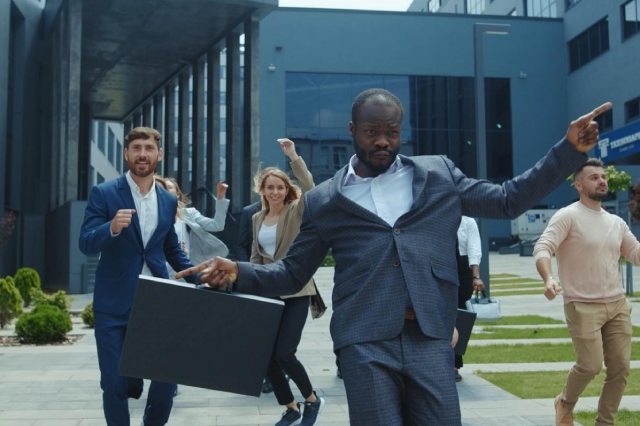
Did you know weak or tight muscles may alter the way you walk? Did you also know that physical therapists study walking mechanics for multiple years and therefor know how you should or should not, Walk It Out? If not, you are in the right place! Hi, I’m Tara, a physical therapist at SportsCare PT in Gresham and today we are talking about gait patterns, the importance of heel strike while walking, and the overall value and health benefits of walking.
Walking is a great way to exercise and something most of us do every day. There are so many different kinds of walkers and runners, which gives physical therapists plenty of chances to study the gait cycle (how people walk) while in clinic or secretly among the general public 

As you can see from the image above, one leg goes through 8 phases to complete a single step. More impressively, both legs are independently performing a separate phase of the gait cycle, but at the same time! Walking is a little more complicated than you might think. Several muscles must activate for each one of these stages to be completed, so if there is weakness or tightness anywhere in the hip, knee, or ankle, it can greatly impact how someone walks. A tight Achilles tendon or weak shin and hip muscles are common causes of gait abnormalities.
The most common part of the gait cycle affected is the heel strike. People experiencing pain most often avoid heel strike during the gait cycle. Instead, they place their foot down in a loading response or mid-stance position. Doing this for an extended period of time may cause more pain and create a less than optimal gait pattern. If you are unsure what heel strike is, check out y’all’s friend Bigfoot!

Now, I haven’t lived in the Pacific Northwest for very long, but I’ve gathered that y’all have mixed reviews about this guy. But you gotta admit, his heel strike is EXCELLENT!
Pain is a huge contributor to gait abnormalities, especially after a surgery or injury. I hear it all the time, “Tara, I can’t believe how weird my leg feels after only being in a boot for 6 weeks!” And lucky for my patients, this is my favorite thing to educate about! But first, BRAIN BREAK!
What has 2 legs but cannot walk?
A PAIR OF PANTS
If you are casted or braced after an injury, or need to use a walker, cane, or crutches to allow the area to heal properly, you’ll most likely experience some gait deviations, or abnormal gait, even after the tissues are healed. When casted or braced your joint is held in one position for a long period of time. During this time, your body is forced to adapt and becomes tight in the position it is held. The inactive muscles become short and weak as they were not able to move through their regular range of motion. Immobilization (holding a joint in one position) is important to allow proper healing of bones and ligaments after a repair or injury, but motion is SEAUX (so) important for function. It is a good thing there are ways we can optimize our movement even with weight bearing restrictions!
“Wait, what?! How could that possibly be?!” Don’t worry, cher (pronounced sha), I got an answer! And it’s right here in our clinic!
We have a handy dandy machine called the AlterG Anti-Gravity Treadmill. This thing is so cool! It allows you to safely practice the correct gait pattern shortly after surgery or injury because it’s ANTI-GRAVITY. The Alter-G allows our staff to adjust the settings specifically for your needs to only allow a percentage of your body weight to be placed on your joints as you walk or even run on a treadmill. There are 3 cameras that surround the Alter-G that project to a screen in front of you so that you can see how you walk. Physical therapists use these cameras to give you feedback in real time as you walk. Having this kind of equipment available during rehab is an awesome tool and has shown to speed up recovery time and get you back to walking normally faster! And it’s super fun!
Walking is a FREE and simple activity that has enormous health benefits. Heart disease is the number one cause of death in America. Walking has been proven to enhance cardiovascular and pulmonary fitness. This means walking keeps your heart and lungs healthy and can reduce risk of heart disease and stroke. Walking regularly also strengthens bones and muscles and improves balance. I encourage you to begin a daily walking program if you have not already!
What have we learned?
- Walking is more complicated than it looks! Walking is the result of several muscles working together and when you are weak or tight your gait pattern can be affected.
- SportsCare PT has an AlterG which can get you back to moving sooner.
- It is so important to continue moving, and walking is an excellent activity to maintain or improve fitness.
If you are experiencing gait problems following injury or surgery, give one of our clinics a call or schedule an appointment online. We have a large staff of professional therapists who are trained and eager to help you Walk It Out with less pain and discomfort.
Now walk it out, have a great day, and GEAUX TIGAHS!

